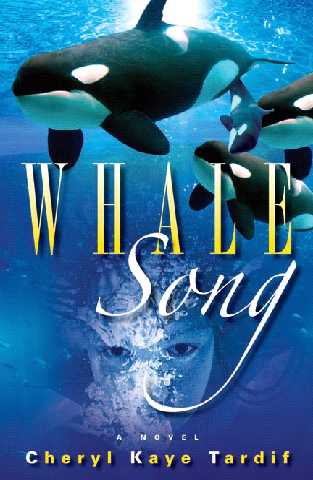1) Whale Song features a "bad" Native girl and a "good" Native girl. Did you set up this duality intentionally, and what does it tell us about Native cultures?
Since the setting of Bamfield on Vancouver Island and in fact the native influences are so vital to the story, I had no choice but to have native characters. After creating Goldie, the “good” native girl, and having her befriend Sarah, the white American girl, I wanted to show the differences in cultures and beliefs and that the two can be united, that they can learn something from one another.
With Annie, the “bad” native girl, I wanted to show that there is often racial tension because of past negative experiences and that if we dig deep enough sometimes we may understand why a bully does what he or she does. This certainly does not condone their actions, but at least it allows for a starting point in recognizing and dealing with this type of situation.
I believe that Goldie and Annie are typical native children for the most part. And like ANY race, there are “good” kids and “bad.” Some kids openly accept “foreigners,” while others don’t. And why is that exactly? Where have children learned to hate or fear people of other nationalities? Racism is all around us, on TV, in music, in life. I think that Whale Song is a novel of tolerance, patience and understanding, and one that shows that hatred knows no bounds, no color, no race. It tells us that an open, accepting heart can be greatly rewarded by the experiences of learning about different cultures. There is beauty and importance in every race.
2) When non-Natives tell Native legends, Natives sometimes object. They'll say the non-Natives have taken the stories out of context, stripped them of their religious meaning, or appropriated them without permission. How do you address such charges?
Well, first I have to say that I have had many native readers and not one has objected to how the story was handled, or the legends retold within. While researching for Whale Song, I went to native sites so that my brief renditions would be as accurate as possible. Many indigenous languages and stories are becoming extinct. If someone does not tell them, they will eventually cease to exist, and since I am retelling them in respect, I believe I am helping to keep the legends alive.
It has always been said that imitation is the best sort of flattery, and by reproducing some of the First Nations legends that inspired me, I look at it as a tribute to wonderful stories that are even pertinent today. By paralleling these popular legends with Sarah’s life journey, it also shows the relevance of stories, legends, myths and cultural beliefs in today’s society, and that there is definite value in sharing them. After all, that is what a story is meant to be―shared.
3) The wise Native elder who enlightens the uncertain youth with stories and aphorisms is a common device in children's books. It's so common that it often becomes a cliché or stereotype. How does Whale Song handle this potential problem?
Nana is a fascinating character, and I receive so many emails from readers who tell me they “love” her. Anyone would want a grandmother like Nana, regardless of race. She is wise, caring and tells the most fascinating stories. I never saw her as a problem or cliché, and I believe neither do most of my readers. She is there because she ‘fits,’ but she only appears at certain times. She is wise because of her age and enjoys sharing her culture. Her role is to unite Sarah with the land around her, the animals and the people.
Nana was one character I saw so clearly from the very beginning, right down to the white streak in her black hair. She brings a multi-generational aspect to the story. And while Whale Song has a definite appeal to the young adult market, it is a work of fiction that appeals, particularly, to women of all ages. My youngest reader that I know of is a 7-year-old girl; the oldest is a 96-year-old woman.


No comments:
Post a Comment